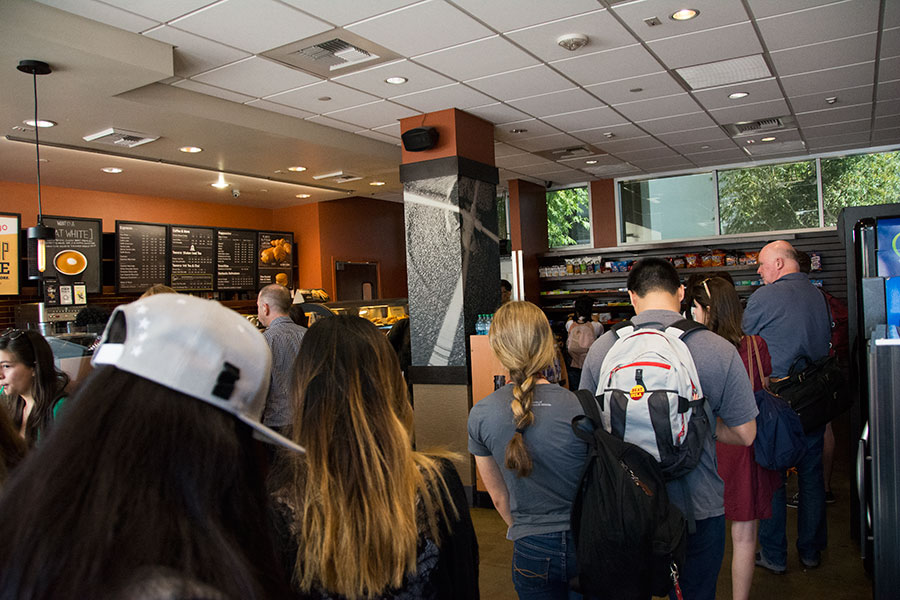Calling all college coffee lovers: Tips to combat post-caffeine calamity

Mariya Dondonyan | Daily Trojan
The line wrapping around TroGro at any given hour says it all. On campus, there is perhaps nothing more ordinary than a college kid clenching a cup of coffee.
According to the National Coffee Association, 54 percent of Americans over age 18 are daily drinkers, but surprisingly, as a study by Nehlig et al. states, caffeine is the most widely consumed central nervous system stimulant, or, in other words, a commonly used psychoactive drug. Though caffeine is obviously not considered a controlled drug, similarities to illegal drugs in terms of withdrawal symptoms. The Diagnostic and Statistical Manual of Mental Disorders listed caffeine withdrawal as a symptom of the now-recognized disorder of caffeine addiction.
Americans love coffee because, to put it simply, caffeine wakes the brain up. Once ingested, caffeine gets to work quickly as well. For some, it only takes 45 minutes to feel a caffeine high, which, according to the Food and Drug Administration, raises blood pressure and increases heart rate.
The reason caffeine is near and dear to the hearts of college students is that
with a little twisting and tightening, it mimics adenosine, a neurotransmitter that usually slows down nerve cell activity. Because caffeine looks like adenosine to the adenosine receptors in the brain, it can bind to but is unable to activate the receptors, essentially blocking them and temporarily turning them off. Without adenosine to keep dopamine and glutamate in check, levels of these two excitatory neurotransmitters soar, making drinkers feel awake and attentive.
Caffeine withdrawal is especially painful, not necessarily because of this
biological mechanism, but because of dependence and tolerance — the fallout of addiction. If you have ever hung around anyone experiencing caffeine withdrawal, you would easily recognize the symptoms. From anywhere between seven days and two months, the DSM-5 lists headaches, lethargy and extreme irritability as a few of the symptoms. In the severest of cases, withdrawal can manifest itself as congestion, constipation and vomiting.
As a Coffee Bean regular, not even the notion of eight weeks of non-stop
migraines can keep me away from my hot cup of coffee in the morning — so here are a few tips to keep caffeine withdrawal at bay (if you ever do choose to take a much-needed break):
- Go slow.
It is important to remember that caffeine is a drug, and when it comes to overcoming addiction, taking it day by day is the key. If you are drinking four cups of coffee a day try switching to decaf or drink less caffeinated teas instead.
- Stay hydrated.
As I am sure most regular coffee drinkers know, caffeine is a diuretic — it makes you dehydrated. Drinking water can also help with those coffee headaches.
- Find natural dopamine kicks.
Exercising, going outside and listening to music are just a few ways to boost your mood without relying on caffeine.
Whether you drink coffee to stay awake or for the taste, it is important to recognize the effect it has on your brain and your body. As with many things in life, moderation is the key!
